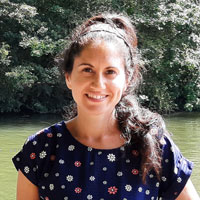You’ve carved time out of a busy schedule, overcome the obstacle of procrastination, silenced the nagging voices of doubt, and (finally!), you’ve written a novel. Congratulations! Already you’ve accomplished something that many people only ever dream of doing.
But the work isn’t over yet…
If you want your novel to be successful, you must pick it apart at the seams. How well have you built your world? How believable are your characters? Does it work in its current structure? Developmental editing delves into these ‘big-picture’ elements of your novel, making sure it has reached its full potential before you send it out into the scrutinous world of the reader or an agent. When you’re self-editing or working with an editor, here are ten aspects that developmental editing explores in fiction:
1. Plot
A plot is a sequence of interrelated actions that forms a story. A good plot will have a clear conflict (something that’s going to thwart the main character in their journey) and must be without holes. Think about your favorite stories in literature. What holds the characters back? How do they overcome this? Your developmental editor will tell you whether the conflict you provide has enough tension and will flag up any inconsistencies in the plot that make your story less believable. That way, readers will stay invested in the story’s outcomes, and will keep turning pages!
2. Narrative Arc
Once you have established a compelling plot, it’s important to make sure that it holds up. Whether you use the classic three-act structure, the hero’s journey, ‘save the cat’ beats, or other frameworks, the narrative arc provides a hand-holding device to guide your reader through. From the inciting incident (or catalyst), midpoint, to the climax of the story, a successful narrative arc ensures each chapter and scene propel your story and characters forwards up to a satisfying resolution.
3. Characters
Your characters are the driving force behind your writing—without them (and without their external and internal conflicts), there would be no story! To create believable characters, you must make sure you really know them. What are their flaws and insecurities? How do they interact with the other characters in your story? How do they view the world they live in? What are their backstories, and are these well placed in your manuscript? Do they behave consistently and authentically? The most important aspect is to understand your characters’ motivations, and how these lead to actions that ultimately determine major outcomes for the story.
4. World-building
Building your world can be one of the most enjoyable aspects of writing fiction, especially in fantasy and sci-fi. Allow your imagination to run wild with creating the intricacies and detail, though you don’t need to share everything with the readers—try to avoid too much description and info-dumping where you can, as this slows down the pacing. Nevertheless, the information you do give needs to be logical and organized—does your world have its own political spectrum, or perhaps a magic system? Establish this before you start; don’t just make up the rules as you go along! It helps to give your readers a sensory experience of your world. Remember that, whilst you have been imagining and familiarizing yourself with this world, it is the first time your readers have stepped foot there, and it is important to make sure that they can see and ‘feel’ it too.
5. Theme
When considering potential themes for your novel, you must decide what you want your readers to take away from it. In the Save the Cat! methodology, the theme of your novel corresponds to the ‘internal need’ or life lesson your character needs to learn throughout their journey. It is during the climax of your story that the protagonist finally uncovers their theme, propelling them towards the final moments and resolution of the story. The theme is the glue of your plot and your characters. It is important to allude to these themes at the beginning of your novel and to make sure you have delivered on your promises by the end.
6. POV and Voice
The point-of-view and voice in which you choose to tell your story is a huge factor in determining its success. The tone you’re looking to set and the genre within which you are writing must inform the writing style. If you’re writing a psychological thriller, for example, a narrative voice that is distant won’t be befitting, as readers need to be able to get inside the characters’ heads to examine them closely. Your developmental editor will tell you whether your point-of-view and tone fit your story, whether each of your characters has their own unique voice and will point towards any inconsistency in your writing.
7. Showing versus Telling
If you want your story to stay with your readers long after they’ve put down the book, it’s important they experience it. This can only be achieved through ‘showing’ as opposed to ‘telling’; one fundamental of creative writing. To ‘tell’ your reader a story is to rely heavily on exposition to impart the information onto them, whereas to ‘show’ them is to call upon their senses, their empathy, and their intuition to allow them to interpret the information themselves. ‘Showing’ is a much more immersive way of storytelling and ensures that your readers experience the characters and make their own judgments of them. By using action, description, dialogue, and body language, you can stir the reader into feeling certain emotions.
8. Dialogue
Good dialogue is believable, interesting, and keep with the personas you have skillfully created for your characters. When writing dialogue, take into consideration your characters’ backgrounds, social classes, accents, and personalities, and how each of these things affects their communication. Think about how human beings communicate; often, more is conveyed through a look or a gentle hand squeeze than through an outpour of words. Your developmental editor will let you know if your dialogue is authentic and if the ratio between dialogue and description seems to falter off balance.
9. Pacing and Flow
Pacing isn’t about the length of a book, but about how the reader experiences the speed of a novel. Having a good pacing keeps your readers engaged and invested in your story. There are certain factors that contribute to the pacing of your novel, such as how much description/dialogue you use (one slows the writing, the other speeds it up), and the way you choose to end your chapters (must be powerful enough to make the reader want to read on). The rhythm and flow of your writing is also important, as it sets the pace at which the reader receives information. Is your writing musical? Do the sentences feel like just the right length, and do the paragraphs tap out to a certain beat, building to mini crescendos?
10. Genre Expectations
Being original is vital for writing a great story—no one wants to read something they’ve already read before. And, although there are (arguably) no original stories, there are tons of imaginative ways to tell them. No matter how fresh your story is, it won’t reach the right audience unless it fits within a genre. For example, readers of fantasy fiction like to be transported out of reality as a means of escapism. Readers of romance expect a ‘happily ever after’ or ‘happy for now’ ending. Adhering to genre norms makes your novel more marketable and allows readers the freedom to choose what kind of book they would like to read. A developmental editor will check your story conforms to the genre in which you’re writing.
Do I Need a Developmental Editor?
A developmental editor is constructive and experienced in recognizing the things in your writing that you, its creator, could be blind to. Most importantly, a skilled developmental editor understands the heart of your story and will echo it back to you until the very last page.





